Historical places in Britain are not just old, they are lived-in remnants of times that shaped the country’s path. You can see it in the worn threshold of a parish church or the chill of a Norman keep. These sites were never meant to impress; they were built to last. Some held armies, others sheltered worshippers or watched over trade routes. Their purpose may have changed, but their presence has not. In Britain, the past is not hidden away, it is part of the streets, the stone, and the sky overhead.
12 Must-Visit Historical Places In Britain
From ancient strongholds to sacred halls, these historical places in Britain continue to hold meaning, offering a close and lasting connection to the lives that shaped the land.
1. Tower Of London

Photo: Bob Collowan / Wikimedia Commons
The Tower of London was built soon after the Norman invasion, around the end of the 11th century. It started as a fortress to keep control over the city and was later used in many different ways. Kings stayed here during times of unrest. It also became a prison, a storehouse for valuables, and even held wild animals brought from abroad. At one point, animals from across the empire were kept there, turning it into one of the earliest menageries in Britain. As one of the most well-preserved historical places in Britain, it offers a close view of how power operated behind closed gates.
Timings: 9 AM – 5:30 PM (Tuesday to Saturday) and 10 AM – 5:30 PM (Sunday to Monday)
Nearby Attractions: Tower Bridge, HMS Belfast, The Shard
2. Hadrian’s Wall, Northern England
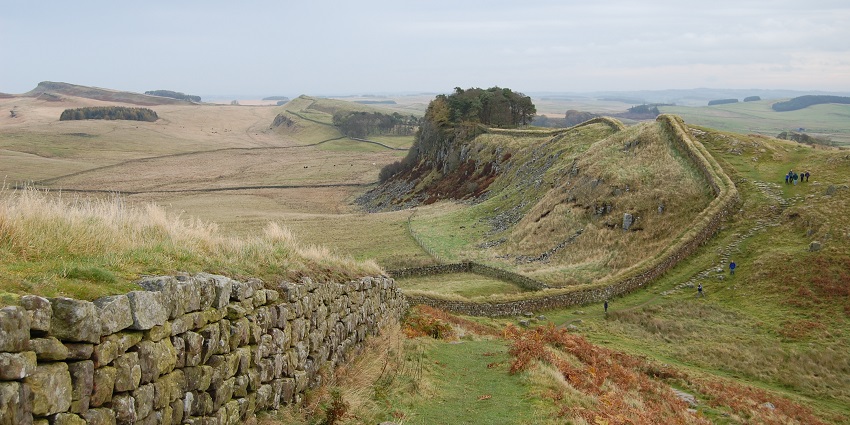
Photo: Steven Fruitsmaak / Wikimedia Commons
Hadrian’s Wall was built by the Romans nearly two thousand years ago. It runs through the north of England, starting near Newcastle and ending close to the west coast. The idea behind the wall was to mark the edge of Roman control and keep watch over who came and went. Soldiers were posted all along it, spread out between small guard posts and larger forts. You can still see the shape of the route in the ground, and in many places, the original stones are still there.
Timings: 10 AM – 5 PM
Nearby Attractions: Vindolanda, Housesteads Fort, Northumberland National Park
3. Stonehenge, Wiltshire
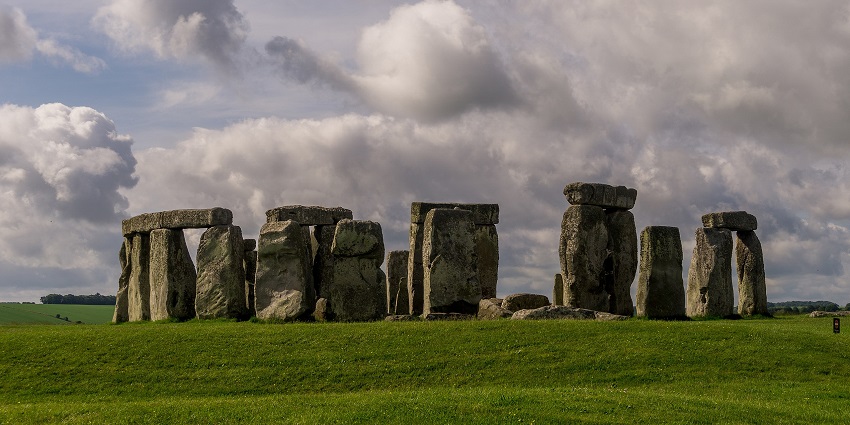
Photo: Sumit Surai / Wikimedia Commons
Stonehenge was first built over 5,000 years ago, beginning with a circular ditch and timber posts. The stone circle was added later, using large sarsen stones and smaller bluestones. Some of these stones were moved from southwest Wales, over 150 miles away, though no one knows exactly how this was done. The stones are placed in a clear pattern, and the surrounding area has several smaller monuments. What you see today is only part of a much larger complex that once spread across the landscape. Among historical places in Britain, Stonehenge stands out for its age and for the questions it raises.
Timings: 9:30 AM – 7 PM
Nearby Attractions: Salisbury Cathedral, Old Sarum, Avebury Stone Circle
4. Edinburgh Castle, Edinburgh
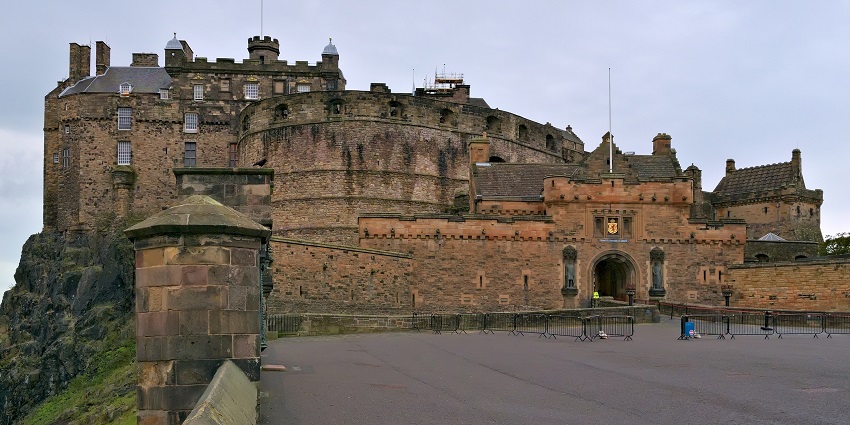
Photo: Daniel Kraft / Wikimedia Commons
Built on Castle Rock, a high point formed by volcanic activity, Edinburgh Castle has been used for defence since ancient times. The oldest part still standing is a small chapel built in memory of Queen Margaret in the early 1100s. Over the years, the castle became a home for Scottish royalty, a base for soldiers, and later a prison. Several kings and queens stayed here, and the building was involved in repeated conflicts, especially during the Wars of Scottish Independence. The Great Hall, the crown room, and Mons Meg, a 15th-century cannon, are some of the key parts to see. The Stone of Destiny, used in royal coronations, is kept here as well.
Timings: 9:30 AM – 6 PM
Nearby Attractions: Royal Mile, Holyrood Palace, National Museum of Scotland
5. Caernarfon Castle, Wales

Photo: Llywelyn2000 / Wikimedia Commons
Caernarfon Castle was built by Edward I in the late 1200s as part of his campaign to control Wales. It stands beside the River Seiont and its walls are shaped with polygonal towers, and the colour of the stone changes as you walk around. The design may have been inspired by Roman architecture, especially the walls of Constantinople. Though it was built to show strength, parts of the castle were never finished. It became the site of royal events, including the investiture of the Prince of Wales in 1911 and again in 1969.
Timings: 9:30 AM – 5 PM
Nearby Attractions: Snowdonia National Park, Menai Suspension Bridge, Segontium Roman Fort
6. Bath Roman Baths, Bath
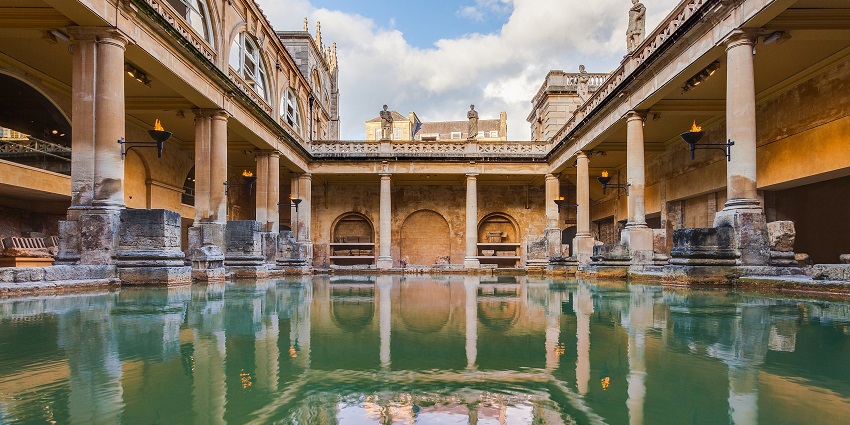
Photo: Diego Delso / Wikimedia Commons
The Roman Baths in Bath were built near hot springs that still rise naturally from underground. The Romans began developing the site around 70 AD. The main pool, now called the Great Bath, was once covered and lined with pillars. Water still runs through parts of the original piping, and it stays warm throughout the year. The baths had several rooms, including spaces for hot and cold bathing, as well as a temple built for Sulis Minerva, a local goddess combined with Roman beliefs. After the Romans left, the buildings slowly fell into ruin.
Timings: 9 AM – 6 PM
Nearby Attractions: Bath Abbey, Pulteney Bridge, Royal Crescent
7. Stirling Castle, Scotland

Photo: DeFacto / Wikimedia Commons
You can see Stirling Castle from far off; it sits on a tall rock with the River Forth below. Its height gave it a strong defensive position, and it became a target in several major conflicts across Scottish history. Most of what still stands was added during the 1400s and 1500s under kings James IV and James V. The Great Hall and the Royal Palace were built during this period, with carved stonework showing royal emblems and political symbols. The chapel, outer walls, and towers were used for both ceremony and protection. Mary, Queen of Scots, was crowned here as an infant in 1543.
Timings: 9:30 AM – 6 PM
Nearby Attractions: Wallace Monument, Church of the Holy Rude, Bannockburn Centre
8. Durham Cathedral, Durham
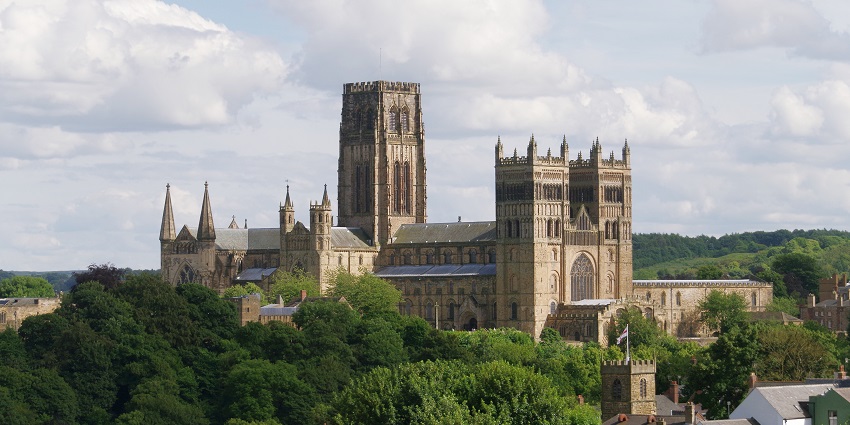
Photo: mattbuck / Wikimedia Commons
Durham Cathedral was built in the late 11th century to house the shrine of Saint Cuthbert. It was also the burial place of the Venerable Bede, one of Britain’s earliest historians. The building was started in 1093 by Norman monks, and much of what they built is still in place today. The large stone columns, rounded arches, and high vaulted ceilings make it one of the best examples of Norman architecture in Europe. It was not just a church, it was part of a larger complex that included a monastery and living quarters for monks.
Timings: 10 AM – 4 PM (Monday to Saturday) and 12:30 PM – 4 PM (Sunday)
Nearby Attractions: Durham Castle, River Wear walks, Botanic Garden
9. Warwick Castle, Warwick
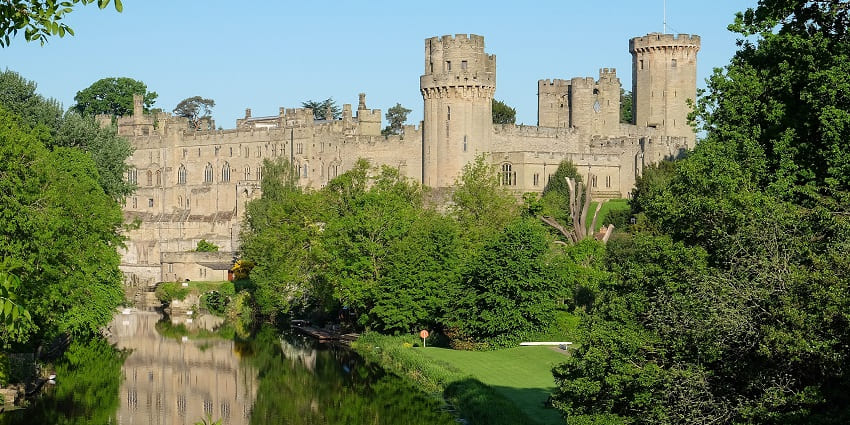
Photo: DeFacto / Wikimedia Commons
Warwick Castle started as a timber fort put up in 1068 after William the Conqueror took the throne. Within a few generations, it was rebuilt in stone and became home to the Earls of Warwick. During the Wars of the Roses, control of the castle shifted more than once. Some parts of the building were designed for defence like the towers and the gatehouse, but many areas were built for daily life. Large halls were used for dining and meetings. Bedrooms, storerooms, and service areas filled the rest. In later years, it became a private home before opening to visitors.
Timings: 10 AM – 4 PM
Nearby Attractions: St Mary’s Church, Mill Garden, The Lord Leycester Hospital
10. Fountains Abbey, North Yorkshire
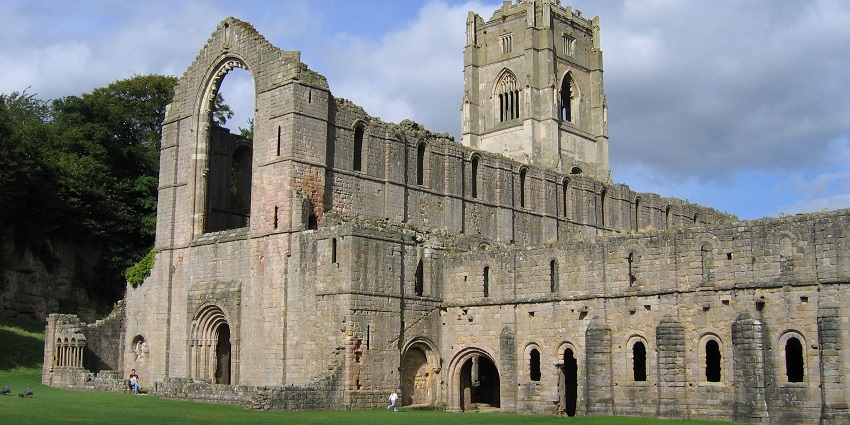
Photo: Klaus with K / Wikimedia Commons
Fountains Abbey was founded in 1132 by a group of monks who followed the Cistercian order. The abbey grew quickly and became one of the richest in England from farming, wool production, and trade. Even though the monks lived modestly, the buildings they left behind were large and carefully made. The church, cloisters, and dormitories were built from local stone and arranged around quiet courtyards. The abbey was closed in 1539 during Henry VIII’s campaign to shut down monasteries.
Timings: 10 AM – 5 PM
Nearby Attractions: Studley Royal Water Garden, Ripon Cathedral, Brimham Rocks
11. Canterbury Cathedral, Kent

Photo: Diliff / Wikimedia Commons
Canterbury Cathedral has been a place of Christian worship for over 1,400 years. The current building was started in 1070, after the Norman conquest, though earlier churches stood on the same ground. It is best known as the site of Archbishop Thomas Becket’s murder in 1170. After that the cathedral turned into a major pilgrimage site during the Middle Ages. Parts of the building, like the crypt, date from the 11th century, while others were rebuilt after a fire in the 1100s. The mix of stonework, carvings, and stained glass shows how the structure changed over time. Pilgrims once walked barefoot to reach Becket’s shrine.
Timings: 9 AM – 5 PM (Monday to Saturday) and 12:30 PM – 5 PM (Sunday)
Nearby Attractions: St Augustine’s Abbey, Canterbury Roman Museum, Westgate Gardens
12. Blenheim Palace, Oxfordshire
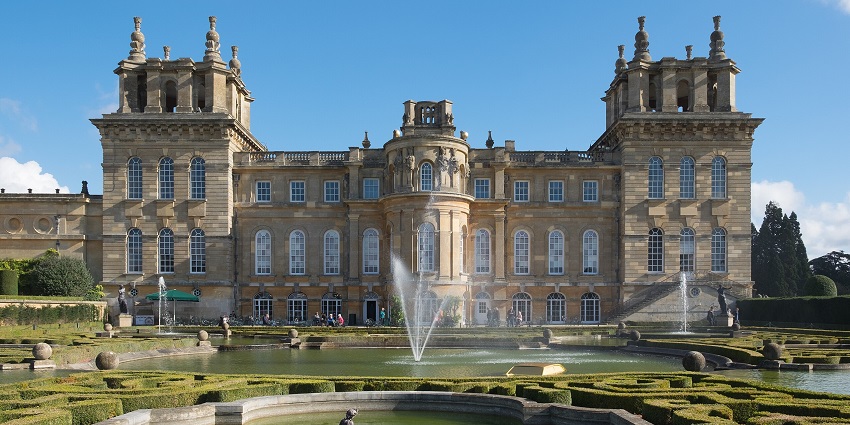
Photo: DeFacto / Wikimedia Commons
Blenheim Palace was built in the early 1700s for John Churchill, the 1st Duke of Marlborough, after he won the Battle of Blenheim. The inside has big rooms, wide stairs, and ceilings that stretch high above. There’s a room on the grounds that shows items from his childhood, including letters and photos. Although it has never been a royal home, it is one of the largest private residences in the country. Many of the original paintings, furniture, and tapestries remain in place. Among historical places in Britain, Blenheim Palace is unique for its mix of national history and family heritage.
Timings: 10 AM – 5:30 PM
Nearby Attractions: Oxford city centre, Cotswolds villages, Oxfordshire Museum
Across towns, hills, and coastlines, historical places in Britain offer more than just a look at old buildings. They hold the traces of real lives, of rulers, workers, monks, and rebels who helped shape the country through time. Some places stand almost unchanged. Others are worn down but still speak clearly. If you want to understand Britain’s past, these are the places to start. Plan your visit with TripXL, walk the paths, and take time to stand still.
Cover Photo: Rafa Esteve / Wikimedia Commons


 WhatsApp
WhatsApp
 Twitter
Twitter









